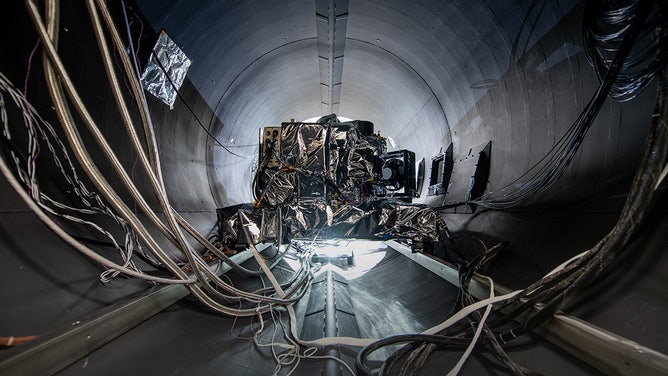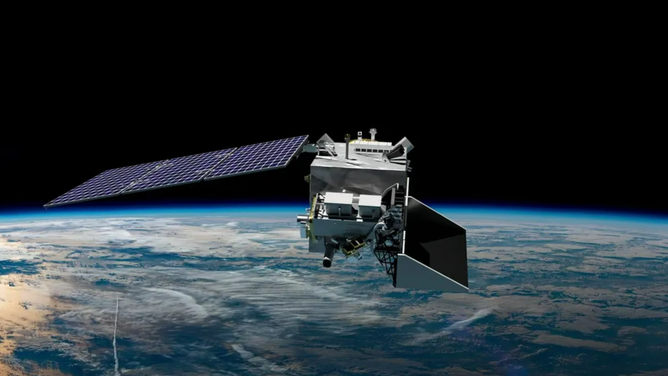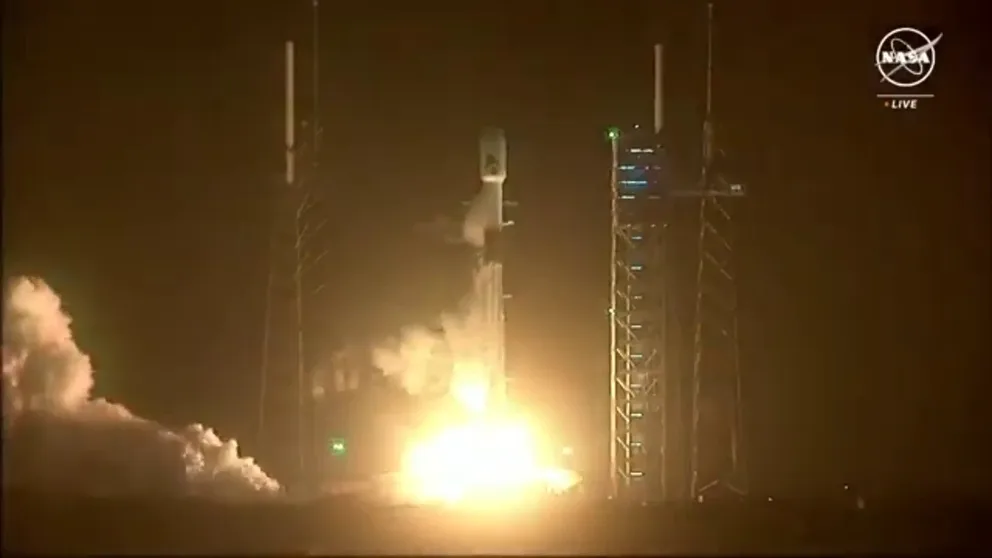NASA mission to improve climate models launches Thursday after weather delays
The Plankton, Aerosol, Cloud Ocean Ecosystem, or what is commonly referred to as the PACE mission, was launched early Thursday morning aboard a SpaceX Falcon 9 rocket from Florida’s Cape Canaveral Space Force Station.
NASA's PACE Mission
The observation satellite will collect data on carbon dioxide and the planet’s oceans (NASA)
CAPE CANAVERAL, Fla. – NASA successfully launched an Earth-observing spacecraft early Thursday morning that will help scientists better understand how carbon dioxide reacts with tiny particles in Earth's most important systems: its oceans and atmosphere.
The Plankton, Aerosol, Cloud Ocean Ecosystem, or what is commonly referred to as the PACE mission, was launched aboard a SpaceX Falcon 9 rocket from Florida’s Cape Canaveral Space Force Station. The launch was initially scheduled for early Tuesday, but NASA and SpaceX postponed the liftoff until Thursday at 1:33 a.m. EST because of stormy weather off Florida's coast.
Watch: NASA launches PACE Mission from Cape Canaveral Space Force Station in Florida
NASA’s PACE mission was launched early Thursday morning from Cape Canaveral Space Force Station in Florida to study
There was a launch opportunity on Wednesday but lingering storms from a low-pressure system moving across the Florida Peninsula continued to bring strong winds, causing SpaceX to wave off a launch attempt. By late Wednesday, the problematic storm system will have moved up into the Southeast U.S., improving the launch conditions late in the week.
After the launch, SpaceX plans to land the Falcon 9 booster back at Landing Zone 1 at Cape Canaveral Space Force Station. The landings are known for creating sonic booms heard around Florida. This will be the fourth flight for the rocket booster, according to SpaceX.
What is the PACE mission?
The multi-million-dollar observation satellite will be composed of several sensors that will help it measure wavelengths of light, aerosol particles and clouds.
"One of the things that I’m really interested in is the dynamic of ecosystems on land, and how they change over time … With the hyperspectral data available from PACE and OCI we’ll be able to do things like look at changes in leaf-level pigment contents and biochemistry," Fred Huemmrich, a member of NASA’s PACE team, stated. "Plants are constantly altering themselves to adjust to the environment, and that is something we can see from data on the light that reflects off them."
2024 ROCKET LAUNCH SCHEDULE SHOWS CONTINUED STEADY PACE OF BLAST-OFFS

The Plankton, Aerosol, Cloud and Ocean Ecosystem mission.
(NASA / FOX Weather)
The observation satellite will have three main sensors, all tasked with monitoring light and particles near Earth’s surface.
"What we're doing here with PACE is really the search for the microscopic, mostly invisible universe in the sea and the sky and, to some degrees, land, too," PACE mission scientist Jeremy Werdell said.
The primary sensor, known as the Ocean Color Instrument (OCI), will measure light wavelengths and could play an important role in climate studies.
"The mission will provide global ocean color, cloud, and aerosol data that will provide unprecedented insights into oceanographic and atmospheric responses to Earth’s changing climate," NASA stated. "PACE will help scientists investigate the diversity of organisms fueling marine food webs and the U.S. economy, and deliver advanced data products to reduce uncertainties in global climate models and improve our interdisciplinary understanding of the Earth system."
NASA’S ENGINEERING MARVEL TAKES FINAL FLIGHT ON MARS
After the satellite reaches orbit, which NASA hopes happens in early February, PACE will scan Earth’s skies every two days.
Werdell said the spacecraft instruments should start collecting data between 40 and 50 days after launch. NASA plans to begin releasing images and data as soon as the on-orbit commissioning period is complete.
"We're hoping that the community dives into super fast and the discovery begins," Werdell said.

NASA PACE mission rendering.
(NASA)
The data is expected to fill in gaps for models that are used to determine what the climate will be decades and even centuries from now.
"PACE is going to give us information that helps us plan today. It'll also give us information that helps us plan in the future," said Kate Calvin, NASA's chief scientist and senior climate advisor.
In 2015, NASA estimated the mission would cost more than $800 million. A week ahead of the PACE launch, NASA officials said the total cost was up to $964 million throughout the lifecycle of the mission.

